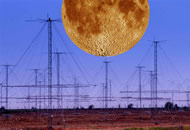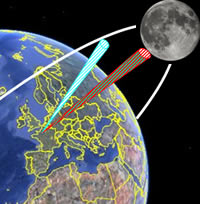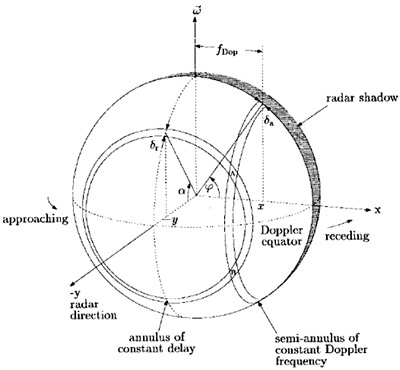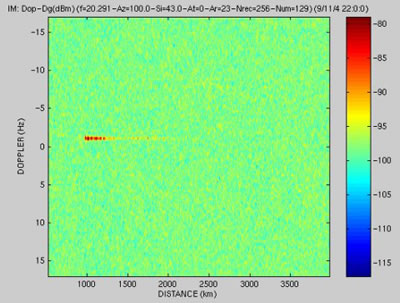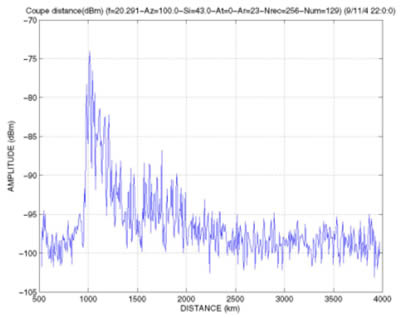- Accueil
- Lunar Radar Control
Lunar Radar Control
The soil, or even the subsoil, of the Moon can be studied… without leaving the Earth! This is indeed what ONERA’s Nostradamus radar can do, if its electromagnetic sight is pointed towards the Moon rather than towards the horizon.
Number 47
|
|
Until now Nostradamus, ONERA’s “sky wave” transhorizon radar, has used the atmosphere’s stratification properties to detect objects well beyond the horizon. For this, Nostradamus’ radar waves are reflected by the ionosphere, at altitudes between 100 and 300km, and make it possible to detect moving targets well beyond the horizon, from a few hundred to several thousands of kilometers away. The applications of Nostradamus concern defense and safety, of course, since the radar is able to detect the movements of aircraft and boats that are very far from our borders. However, Nostradamus is also a powerful research tool for geophysicists, oceanographers and aeronomists, who use it to study the movements of the ionosphere, to chart the state of the sea and sea currents, or to receive seism or tsunami warnings. |
|
With the aim of diversifying the possible targets and practices of this powerful detection tool, new functionalities have been explored since 2009, with the Paris Institute of Earth Physics (IPGP), a regular collaborator with ONERA. From now on, its waves will travel towards our natural satellite, using a novel method: trans-ionospheric propagation, which consists in crossing the ionosphere, this time using the waves of highest frequencies of the HF spectrum. Why the Moon? There are two reasons: the first, according to Jean-Philippe Molinié, of the Electromagnetism and Radar department: “We are mainly interested in the radar aspect: when a high frequency wave crosses the ionospheric layers, it is slightly deflected. The correction of this bias would improve the location of objects within the ionospheric layers, or even beyond them”. These measurements would complement those of the Graves space surveillance radar, also designed by ONERA, which determines the orbits of satellites flying over France. |
|
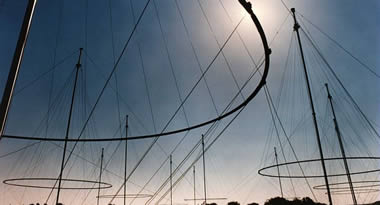 The Nostradamus radar antenna network |
|
|
The second reason for such research, for the researchers of the IPGP, is the study of the lunar surface. “That interests them because at HF, it must be possible to penetrate the lunar surface, under the regolith, to probe the subsoil a little” says the radar specialist. The wave penetration depth is thus estimated, which provides information on the composition of the subsoil, where some still hope to find a good quantity of water. In addition, measurements of the Moon with HF waves would make it possible to obtain knowledge on some lunar surface parameters, such as the dielectric permittivity and conductivity of the surface.
|
|
 This is what the moon looks like on the Nostradamus radar screen! For the specialists, this trace makes sense (see below) |
|
|
More technical supplements
|
|
